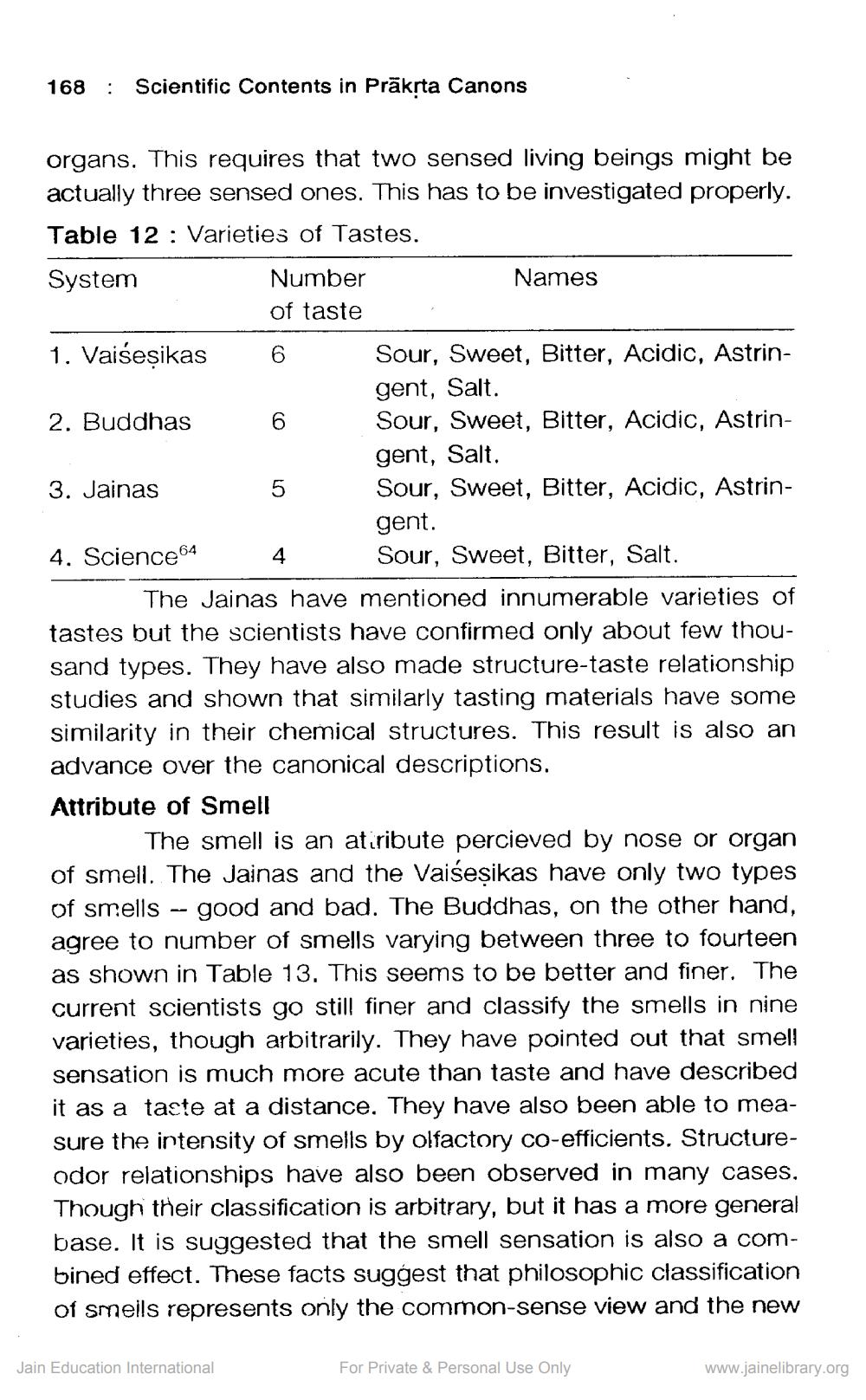________________
168 : Scientific Contents in Prakrta Canons
organs. This requires that two sensed living beings might be actually three sensed ones. This has to be investigated properly. Table 12 : Varieties of Tastes. System Number
Names of taste 1. Vaiśeșikas
Sour, Sweet, Bitter, Acidic, Astrin
gent, Salt. 2. Buddhas
Sour, Sweet, Bitter, Acidic, Astrin
gent, Salt. 3. Jainas
Sour, Sweet, Bitter, Acidic, Astrin
gent. 4. Science64 4 Sour, Sweet, Bitter, Salt.
The Jainas have mentioned innumerable varieties of tastes but the scientists have confirmed only about few thousand types. They have also made structure-taste relationship studies and shown that similarly tasting materials have some similarity in their chemical structures. This result is also an advance over the canonical descriptions. Attribute of Smell
The smell is an atiribute percieved by nose or organ of smell. The Jainas and the Vaiseșikas have only two types of smells -- good and bad. The Buddhas, on the other hand, agree to number of smells varying between three to fourteen as shown in Table 13. This seems to be better and finer. The current scientists go still finer and classify the smells in nine varieties, though arbitrarily. They have pointed out that smell sensation is much more acute than taste and have described it as a taste at a distance. They have also been able to measure the intensity of smells by olfactory co-efficients. Structureodor relationships have also been observed in many cases, Though their classification is arbitrary, but it has a more general base. It is suggested that the smell sensation is also a combined effect. These facts suggest that philosophic classification of smeils represents only the common-sense view and the new
Jain Education International
For Private & Personal Use Only
www.jainelibrary.org




